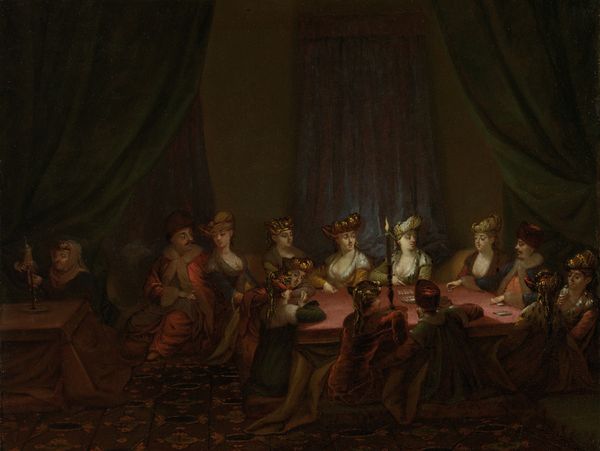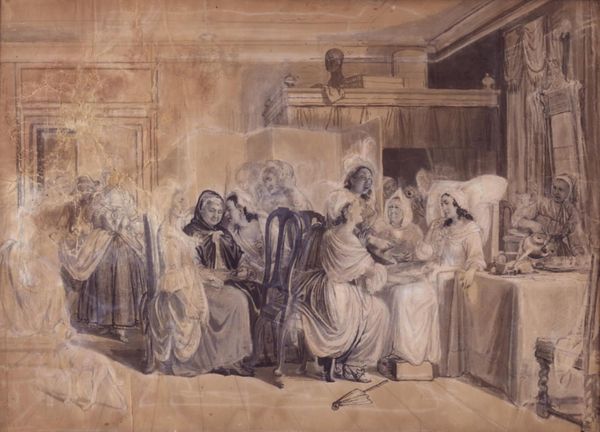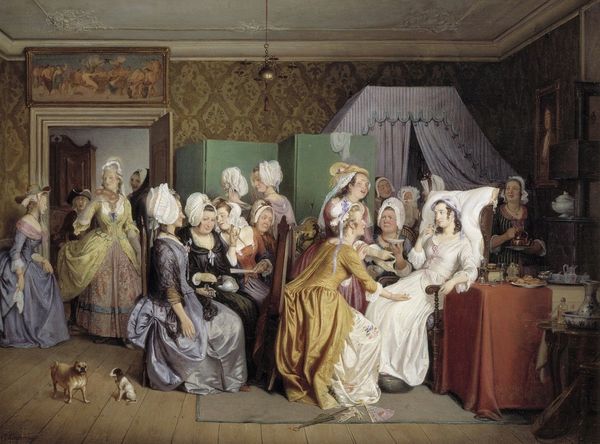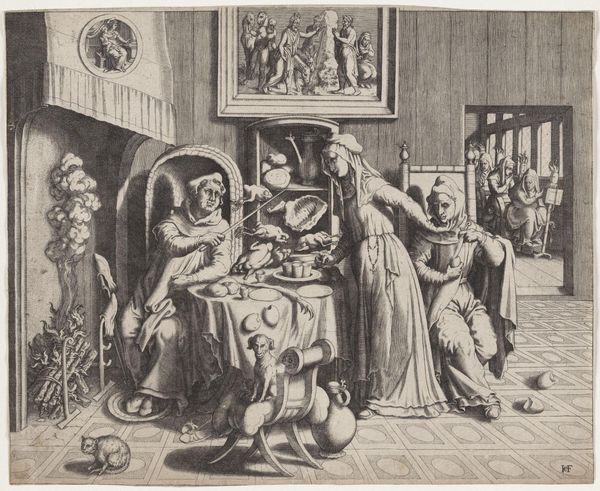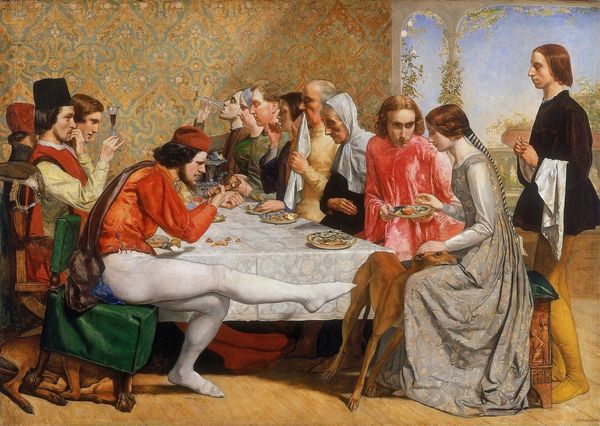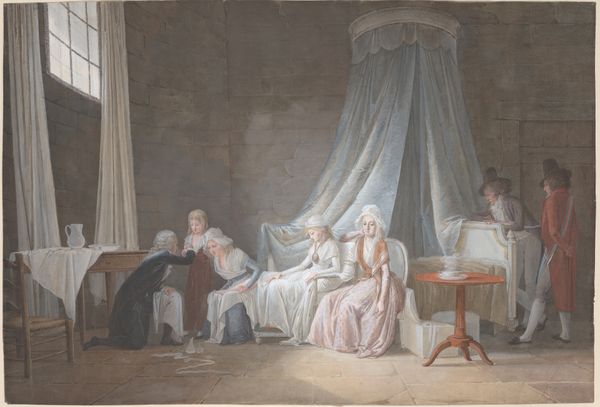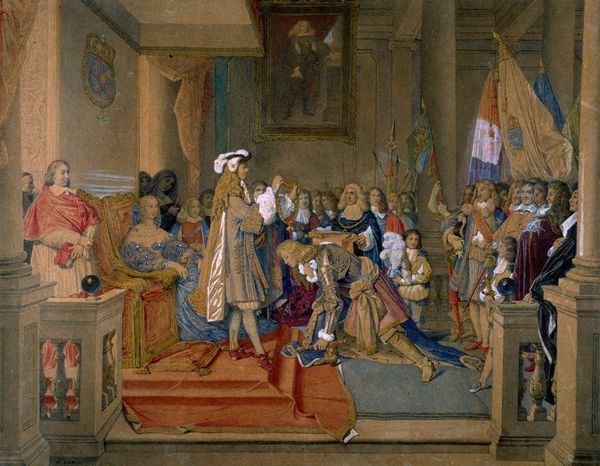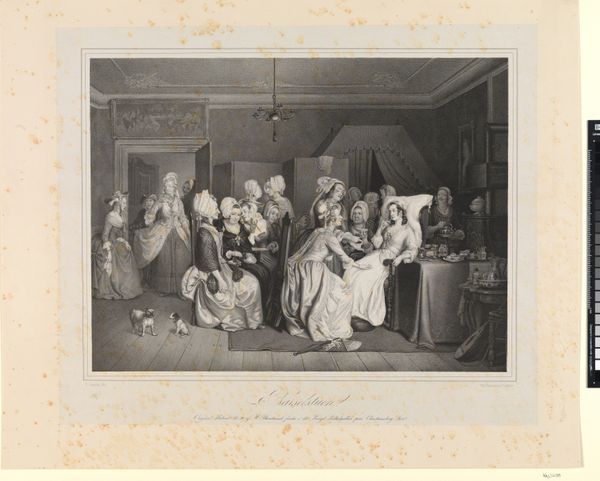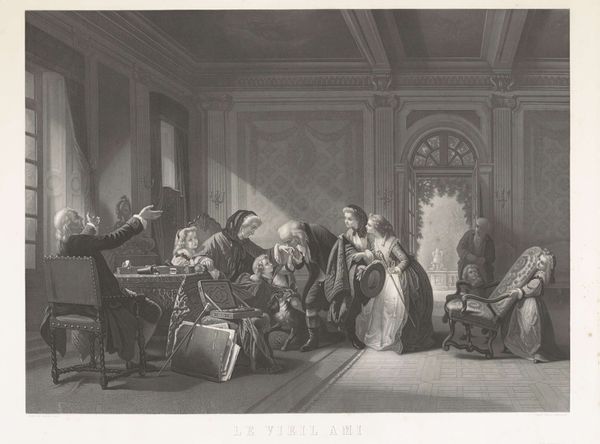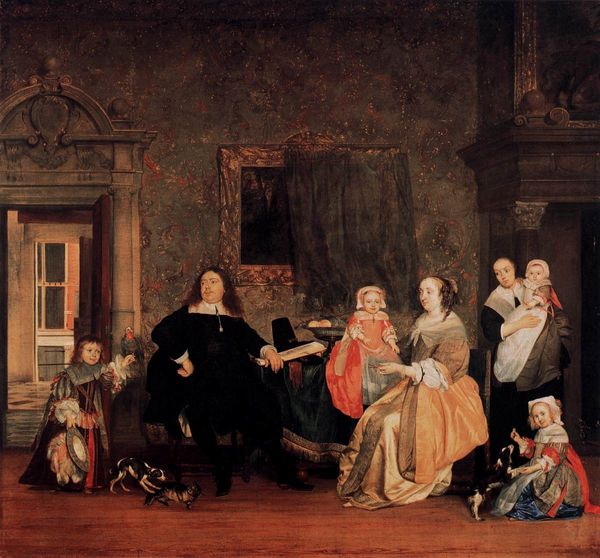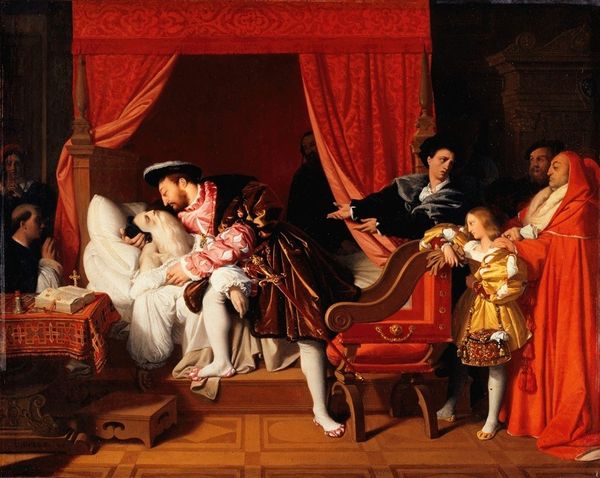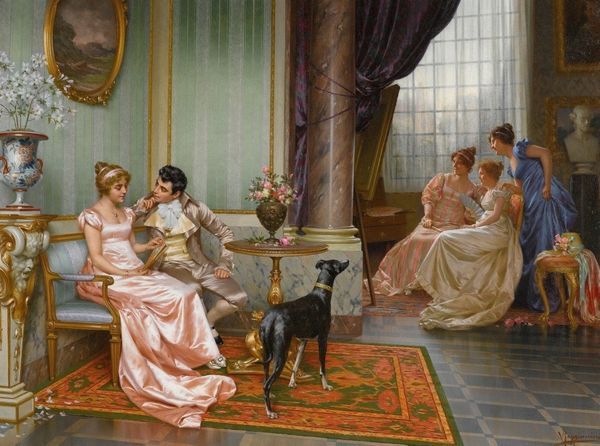
Egyptian Scene (possibly Moses and Zipporah) 1865 - 1880
0:00
0:00
painting, watercolor
#
portrait
#
painting
#
figuration
#
traditional architecture
#
watercolor
#
men
#
genre-painting
#
history-painting
#
academic-art
#
watercolor
Dimensions: 35 x 46 in. (88.9 x 116.8 cm)
Copyright: Public Domain
Curator: Here we have Erastus Salisbury Field’s “Egyptian Scene (possibly Moses and Zipporah),” likely completed sometime between 1865 and 1880. It’s quite a striking watercolor. Editor: Striking is one word for it. The rigid formality and symmetry lend a rather uncanny air to the whole scene. It's like a wax museum tableau. Curator: Observe the composition. The artist constructs an almost stage-like space, doesn’t he? Vertical pillars flank a central, draped alcove, all within a tight interior perspective. The patterning on the walls and floor compete with the characters. There’s very little depth of field. Editor: Indeed, and the architectural elements signal more than mere décor. Columns often represent strength or support, and within biblical narratives, doorways or thresholds hold potent symbolic value. It all gestures toward rituals of entry, tradition, and established power structures. Curator: Note the figures, each rendered with almost equal visual weight. The precise articulation of their costumes, and their controlled placement across the scene, creates a kind of visual equilibrium. Editor: Precisely! It draws attention to the details: the garments, the hairstyles—things that serve to identify cultural or religious belonging. Assuming the title is correct, the placement and activity within this space reinforces the cultural weight of this imagined meeting between Moses and Zipporah. This portrayal presents questions, not just about the story, but also about how mid-19th century American artists like Field interpreted these historical moments. The imagery of a biblical narrative, set in an "Egyptian" interior, has resonance far beyond a simple painting. Curator: In addition to the semiotic interplay, the handling of light is remarkable. Diffuse yet consistent illumination fills the room, flattening forms while permitting intricate delineation of pattern. It's both illuminating and strangely distancing. Editor: It leaves one pondering what is fact and what is artifice. Thank you. Curator: My pleasure. A potent intersection of history and technique, indeed.
Comments
No comments
Be the first to comment and join the conversation on the ultimate creative platform.
